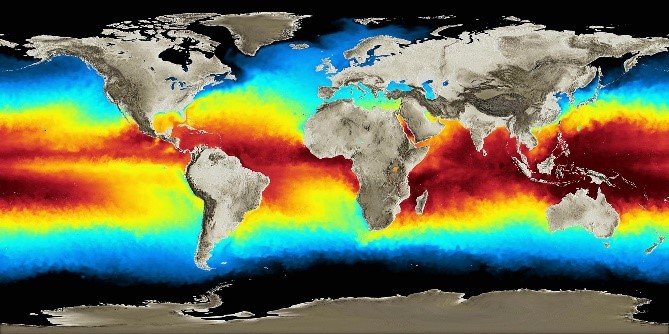





Disclaimer: Copyright infringement not intended.
Context
Findings
Global Ocean Heat Content (OHC):
Key Points:
Climate Indicator:
Warming Trend:
Impact on Sea Levels:
Ocean Circulation and Climate Patterns:
Measurement Techniques:
Deep Ocean Warming:
Thermal Inertia:
Ecosystem Impact:
Global Climate Models:
International Collaboration:
Reasons behind rising Global Ocean Heat Content (OHC)
The rising Global Ocean Heat Content (OHC) is primarily attributed to human-induced climate change and various factors related to the Earth's energy balance. Here are key reasons behind the increasing OHC:
Greenhouse Gas Emissions:
Increased Radiative Forcing:
Ocean Thermal Inertia:
Surface Warming and Deep Ocean Heating:
Natural Climate Variability:
Decreased Heat Loss to the Atmosphere:
Changes in Ocean Circulation:
Melting Ice and Glaciers:
Long-Term Warming Trends:
Human-Induced Climate Change:
Way Ahead
|
PRACTICE QUESTION Q. In the context of climate change and its impact on marine ecosystems, consider the following statements regarding the rising Global Ocean Heat Content (OHC): Statement 1: The primary driver of the increasing OHC is the cooling effect of ocean currents redistributing heat globally. Statement 2: The thermal inertia of the oceans allows them to rapidly release absorbed heat, contributing to the persistent rise in OHC. Choose the correct answer using the codes below: A. Both statements are true. B. Statement 1 is true, but Statement 2 is false. C. Statement 1 is false, but Statement 2 is true. D. Both statements are false. The correct answer is: C. Statement 1 is false, but Statement 2 is true. Explanation: Statement 1 (The primary driver of the increasing OHC is the cooling effect of ocean currents redistributing heat globally): This statement is false. The primary driver of the rising Global Ocean Heat Content (OHC) is not the cooling effect of ocean currents but rather the increased absorption of heat due to human-induced climate change. Greenhouse gas emissions, particularly carbon dioxide, trap heat in the atmosphere, leading to a warming planet. This excess heat is absorbed by the oceans, contributing to the rise in OHC. Statement 2 (The thermal inertia of the oceans allows them to rapidly release absorbed heat, contributing to the persistent rise in OHC): This statement is true. The oceans have high thermal inertia, meaning they can store and release heat over extended periods. Even if greenhouse gas emissions were to stabilize, the oceans would continue to release absorbed heat, contributing to the persistent rise in Global Ocean Heat Content. Therefore, the correct answer is C. Statement 1 is false, but Statement 2 is true. |






© 2025 iasgyan. All right reserved